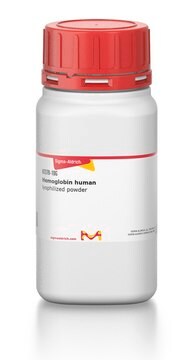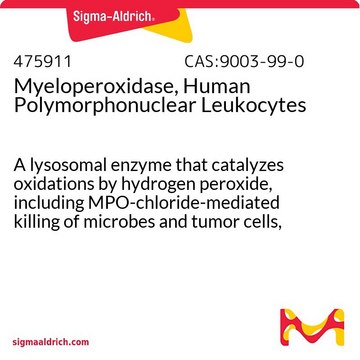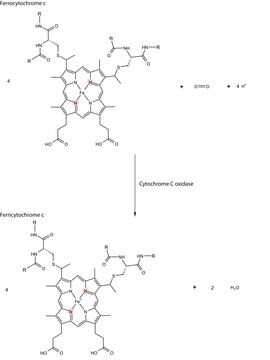A3672
Azurin aus Pseudomonas aeruginosa
from Pseudomonas aeruginosa, lyophilized powder
About This Item
Empfohlene Produkte
Biologische Quelle
Pseudomonas aeruginosa
Qualitätsniveau
Form
lyophilized powder
Zusammensetzung
Protein, ≥65% Lowry
Konzentration
≥65.0% (Lowry)
Methode(n)
toxicology assay: suitable
Löslichkeit
water: soluble 1—1.1 mg/mL, clear, blue (light blue to blue)
UniProt-Hinterlegungsnummer
Lagertemp.
−20°C
Angaben zum Gen
Pseudomonas aeruginosa ... AZU(878046)
Suchen Sie nach ähnlichen Produkten? Aufrufen Leitfaden zum Produktvergleich
Allgemeine Beschreibung
Anwendung
- in the cytotoxicity and cell viability studies in human osteosarcoma cell line
- for the functionalization of silicon nitride cantilevers for interaction studies
- for coating gold surface and insulating functionalized oxide surfaces of silicon oxide and mica
Biochem./physiol. Wirkung
Physikalische Form
Lagerklassenschlüssel
11 - Combustible Solids
WGK
WGK 3
Flammpunkt (°F)
Not applicable
Flammpunkt (°C)
Not applicable
Persönliche Schutzausrüstung
Eyeshields, Gloves, type N95 (US)
Analysenzertifikate (COA)
Suchen Sie nach Analysenzertifikate (COA), indem Sie die Lot-/Chargennummer des Produkts eingeben. Lot- und Chargennummern sind auf dem Produktetikett hinter den Wörtern ‘Lot’ oder ‘Batch’ (Lot oder Charge) zu finden.
Besitzen Sie dieses Produkt bereits?
In der Dokumentenbibliothek finden Sie die Dokumentation zu den Produkten, die Sie kürzlich erworben haben.
Unser Team von Wissenschaftlern verfügt über Erfahrung in allen Forschungsbereichen einschließlich Life Science, Materialwissenschaften, chemischer Synthese, Chromatographie, Analytik und vielen mehr..
Setzen Sie sich mit dem technischen Dienst in Verbindung.








